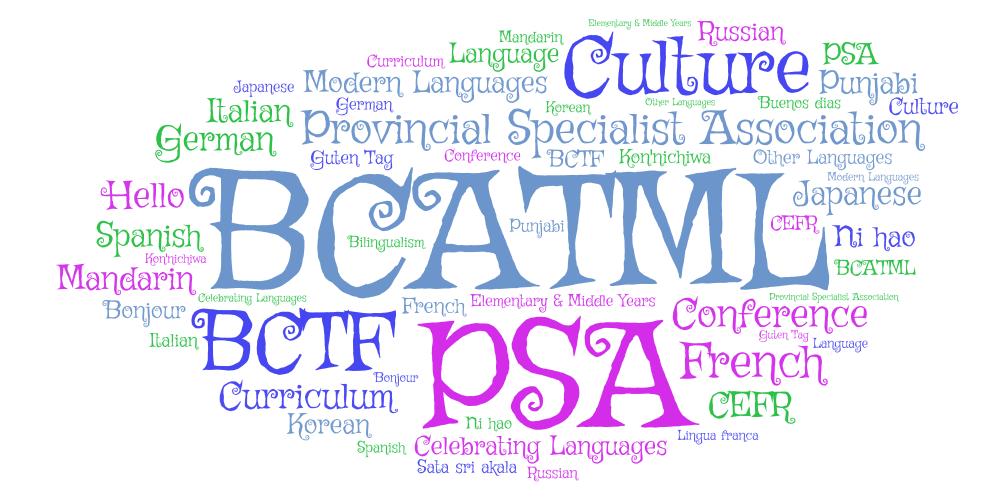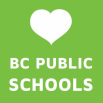BCATML's long history ...

In 2018-19, BCATML celebrated its 60th anniversary! Below, you will find a synopsis of BCATML's existence. This is a work in progress, and has taken numerous hours of research to curate. We hope you will find this stroll down memory lane enlightening.
The early years:
In 1958-59, the BCTF created eleven Provincial Specialist Associations (PSAs), including the BC Association of Teachers of Modern Languages with Mr. Alex Snowdon as the first president of the newly formed PSA. However, BCATML existed long before dating back to 1936 with Mr. H. Hickman as our first Chair. According to BCTF records, BCATML was known as a Subject Section prior to 1958. BCATML would hold annual conventions in conjunction with the BCTF's Annual General Meeting. The convention included an AGM for BCATML, one or two speakers, and time for various language groups (French, German, etc.) to meet. These conventions would evolve over the decades, as would BCATML. Here are some of the summary findings we were able to uncover ...
The early years:
In 1958-59, the BCTF created eleven Provincial Specialist Associations (PSAs), including the BC Association of Teachers of Modern Languages with Mr. Alex Snowdon as the first president of the newly formed PSA. However, BCATML existed long before dating back to 1936 with Mr. H. Hickman as our first Chair. According to BCTF records, BCATML was known as a Subject Section prior to 1958. BCATML would hold annual conventions in conjunction with the BCTF's Annual General Meeting. The convention included an AGM for BCATML, one or two speakers, and time for various language groups (French, German, etc.) to meet. These conventions would evolve over the decades, as would BCATML. Here are some of the summary findings we were able to uncover ...
|
1960s:
In May 1962, BCATML saw the inaugural publication of LINGUA, our professional journal. In the words of Mr. Bruce Waters, LINGUA’s first editor, the goal and purpose of our professional newsletter is “that modern language teachers in the province will make use of their journal to share with other teachers the results of their varied teaching experience. Articles on successful teaching techniques, the use of new devices, linguistic studies, and personal experiences in foreign countries would be appreciated. The criterion for suitable articles should, I think, be relative permanence of value. Our newsletter aims to keep teachers informed of current happenings, the journal aims to stimulate thought and promote professional competence.” Nearly 60 years later, BCATML’s professional newsletter has kept with this tradition and is available to all current members as a quarterly publication (under the Resources tab). Students in the early 1960s studied foreign languages for two and a half years in high school; usually French, German, Spanish, or Latin. The popularity of modern language classes ebbed and flowed throughout the decade. In 1961, there were reportedly 2,805 students enrolled in Latin courses; however by 1965, only 759 – a drop of 73% in five years! By the end of the decade, BCATML promoted the development of alternative languages where practical, for example Italian, Russian and Japanese. The Audio-Lingual Approach made for a shift in the way modern languages were taught in British Columbia and set the stage for language acquisition. It was hoped that students would be able to converse with considerable fluency and accuracy with native speakers of the language. Teacher N. T. Molnar predicted a time would “come when at least four years of foreign language will be compulsory for the academically-minded student.” 1963 saw the creation of a new French 8 course. Thanks to Miss Sadie Boyles, over 40 teachers enrolled in her non-credit course that summer to learn what to teach along with ideas on classroom methods and teaching aids. Many teachers expressed uncertainty and unease over teaching French 8, while others relished at the opportunity. Mr. E. A. Bryan was one such teacher who wrote to say that his goal was to have each child make some response in French by the end of each lesson. One technique he found highly valuable was the use of songs. After buying a ukulele, students sang the alphabet song while learning many others. To keep students’ interests from waning, students sang harmonizing parts, including boys who joined in and enjoyed the musical enrichment in these early French 8 classes.
The cost of an annual BCATML membership was only $1, but rose to $3 by the end of the decade. BCATML had approximately 265 – 300 members on average, with 377 members in 1968. BCATML’s Executive included language representatives for French, German and Spanish. BCATML’s convention and Annual General Meetings were held in conjunction with the BCTF’s AGM, one of which was at the Georgia Hotel (1965) where lunch cost $2.63, including taxes! The BCTF listed (among other items) a record player and tape recorder for the exclusive use of the modern languages department in a school; records and/or tapes published as accompaniments to the official texts in use, and adequate maps as the minimum instructional equipment and supplies for teaching modern languages. 1970's:
This section has yet to be written.
|
Past Presidents:
|



